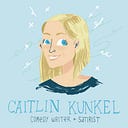Interview with Humor Writer and Author Tiffany Midge
Her new book is “Bury My Heart at Chuck E. Cheese’s”
I first saw Tiffany’s Midge’s work on McSweeney’s, in a piece that we’ll talk about later in the interview. Her new book “Bury My Heart at Chuck E. Cheese’s” is a compelling collection of life, politics, and identity as a Native woman in today’s America. With an artful mix of sly humor, social commentary and meditations on love and loss, she weaves short, stand-alone musings into a powerful — and powerfully funny — memoir. A citizen of the Standing Rock Sioux Tribe, she’s the former humor columnist for Indian Country Today and teaches multi-genre humor writing that elevates awareness of social justice issues. Her writing has appeared in McSweeney’s, The Offing, Waxwing, Moss, and World Literature Today.
Take it away, Tiffany!
Tell us about your writing backstory — what was your entry point? When in your life did you start identifying as a writer?
When my 6th grade teacher Mrs. Williams told me that she hoped to read a book by Tiffany Midge one day. That same year I won the class “Pen & Paper” award, which I assume was for both writing and drawing. I believe what impressed Mrs. Williams so much was that the assignment for social studies was a research report on different states. I wrote mine…
